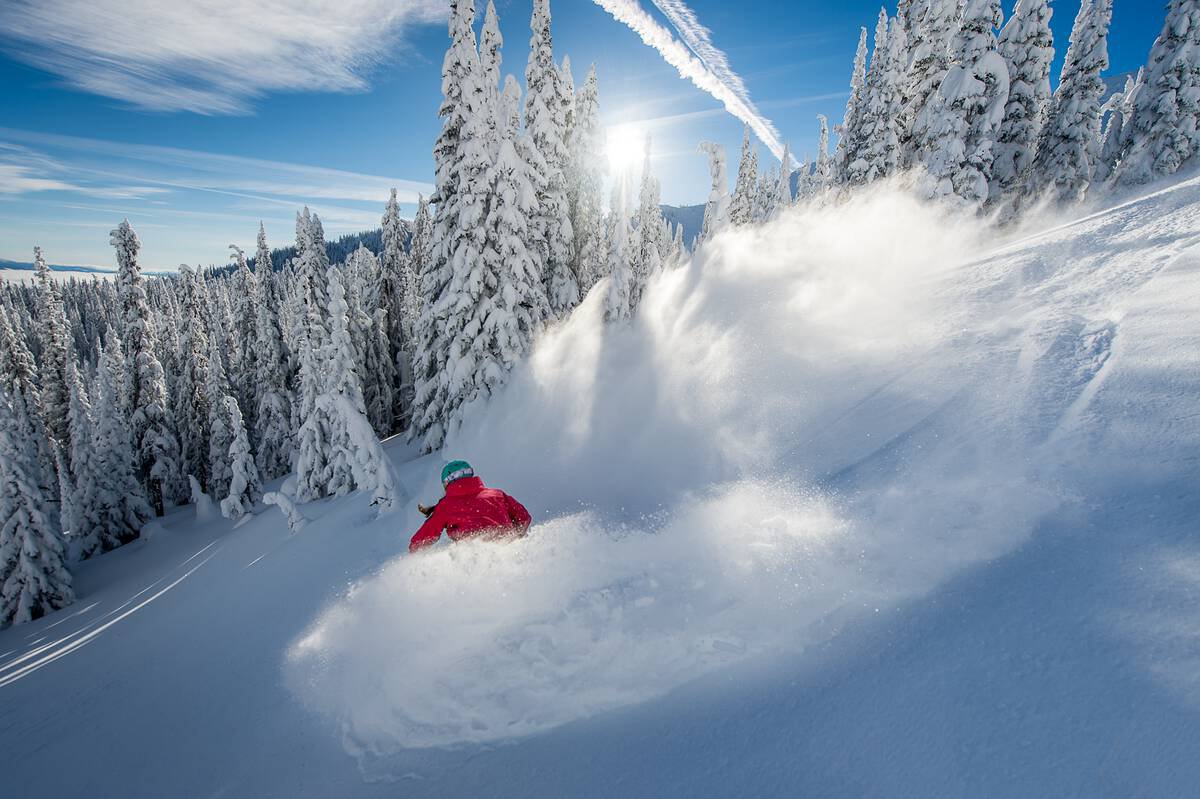What is Champagne Powder?
Why Skiers Chase the Lightest Snow in British Columbia
There’s a kind of snow in British Columbia, Alberta, and a handful of other regions, that doesn’t behave like snow at all. It drifts rather than falls, stacking in soft, weightless layers that sparkle even in shade. Locals call it champagne powder which sounds poetic until you’ve skied through it, then you realize it’s simply descriptive. The snow lifts, sprays, and settles like effervescence. It’s light enough to swallow sound.

A Perfect Recipe for Powder
Champagne powder isn’t everywhere. It’s born in cold, dry air — the kind that exists when Pacific storms travel inland and lose their moisture to elevation. By the time those systems reach the Monashee, Selkirk, and Purcell mountains, what’s left are frozen crystals with low water content.
The result is snow with less than seven percent moisture — close to half the density of what falls on the coast. Where Whistler gets heavy, “coastal” powder, the Interior gets silk. It’s snow that doesn’t clump or crust, that floats beneath skis and resets itself after every storm.
What creates true champagne powder:
- Cold, dry air: Keeps snow crystals separate and weightless.
- Pacific moisture: Storms lose density as they cross the Coast Mountains.
- Mountain elevation: High altitudes in ranges like the Monashees and Selkirks allow flakes to freeze fast and stay fluffy.
- Low humidity: Prevents the snow from clumping, giving it that fine, powdery texture.
The Powder Highway and Its Neighbours
This interior snowbelt gave rise to the Powder Highway — a looping route through some of Canada’s most storied resorts: Revelstoke, Kicking Horse, Fernie, Red Mountain, and others. Each has its own rhythm and topography, but they share this same impossibly light snow. That same pattern carries east into Alberta’s Rockies, where resorts like Sunshine Village and Lake Louise see similar dry, powder-rich conditions — the kind captured in our Canadian Rockies ski experience.
Beyond the main circuit, resorts like Big White and SilverStar tap into the same weather system while offering a more approachable experience. Big White’s “Okanagan Champagne Powder” is a perfect for consistent, family-friendly, skiable terrain that shares the same ethereal snow that draws purists deeper into the range.
How It Feels
To ski champagne powder is to feel lighter than you expect. The snow gives under your skis but doesn’t grab, turns are smooth, quiet, almost suspended. When you fall, it catches you softly, and for a second you disappear into a blur of cold air and glittering crystals.
It gives the sensation of floating, of moving through something that seems too light to hold you at all.
The Quiet Signature of a Region
Champagne powder doesn’t just shape the skiing — it shapes the rhythm of life in the Interior. Towns like Kelowna, Vernon, and Revelstoke depend on the kind of winter that draws travellers from around the world, yet still feels local in pace and spirit. The snow is part of the identity here: dependable, unhurried, quietly world-class. You see it in the family-run lodges, in the early lift lines filled with locals, in how easily the mountains fold into daily life.
Planning a Ski Trip in BC
Across the Interior, from Revelstoke’s backcountry bowls to the family-friendly runs of Big White, every resort offers its own way to experience this distinctive snow. With its recognition by Condé Nast, Big White continues to be one of Canada’s most popular ski destinations, offering an unparalleled experience for both seasoned and new skiers alike.
Landsby’s Ski British Columbia: Big White Resort experience highlights what makes this mountain special. You’ll enjoy wide-open runs, a walkable alpine village, and the signature Okanagan Champagne Powder that defines every turn. It’s a place where the snow feels effortless and the pace of winter comes naturally.



